Blue Bell Plant Information Growing Bluebells From Seed
Hyacinthoides non-scripta
English or common bluebells are the flowering perennial bulbs you can find carpeting woodlands with layers of blue in Europe in the springtime. They're steeped in folklore and history.
These classic spring bloomers are suitable for cultivation in USDA Hardiness Zones 5 to 8, and will transform any shady garden into a sea of sky-rivalling color.
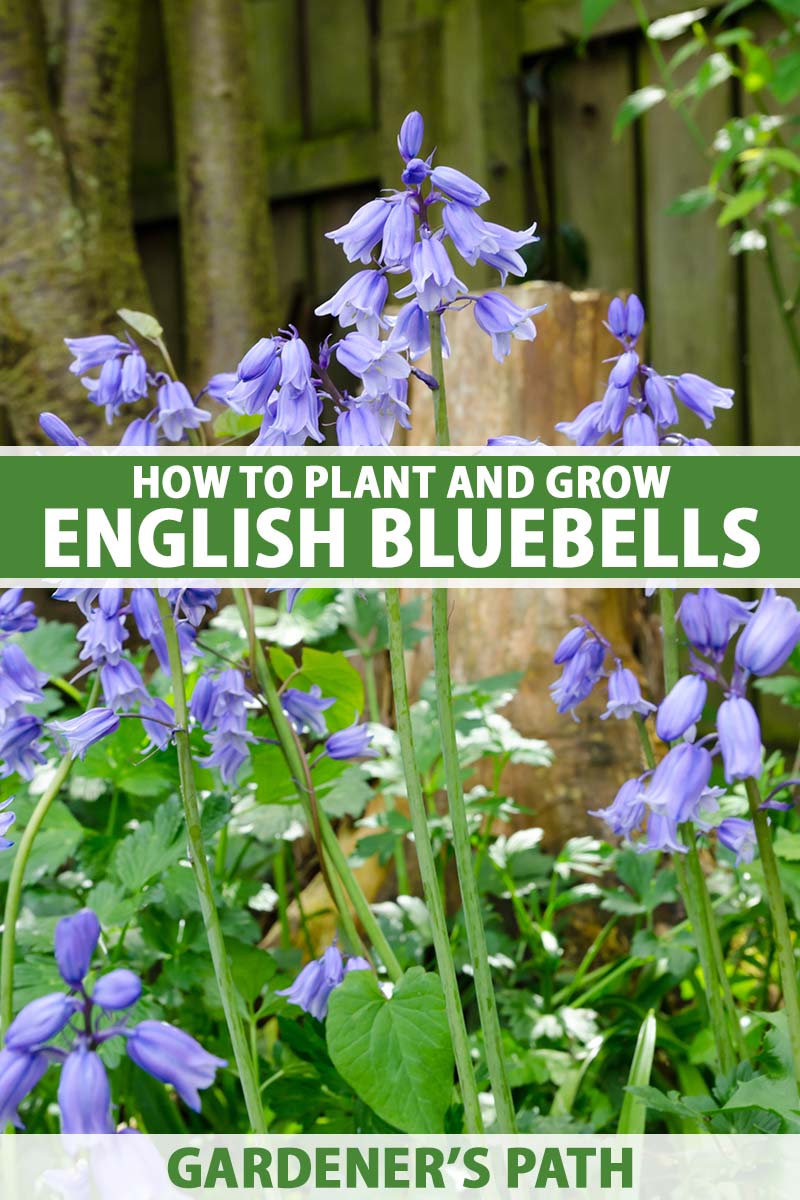
We link to vendors to help you find relevant products. If you buy from one of our links, we may earn a commission .
In this guide, we'll talk about everything you need to successfully grow this beautiful, quaint plant in your garden.
Here's what I'll cover:
What You'll Learn
- Cultivation and History
- Propagation
- How to Grow
- Growing Tips
- Pruning and Maintenance
- Where to Buy
- Managing Pests and Disease
- Best Uses
- Quick Reference Growing Guide
Cultivation and History
Hyacinthoides non-scripta, also known as English or common bluebell, fairy flower, harebell, bell bottle, crow leek, or wild hyacinth, is native to western Europe.

In some places the botanical name is still listed as Scilla campanulata, S. nutans, or Endymion non-scripta.
Although they look similar, English and Spanish bluebells (Hyacinthoides hispanica) are different plants. English types have cream-colored anthers, not blue ones like the Spanish variety.
The bell-shaped blooms are fragrant, they all hang to one side of the stem, and the flower spikes (racemes) droop. The English species is also shorter and smaller overall than the Spanish type.
English and Spanish plants will hybridize if located near each other, resulting in what's known botanically asH. x massartiana. This is just one of the reasons true English bluebells are threatened, and thus protected in the UK.
Over half of the world's bluebells grow in the UK, namely in old British woods.
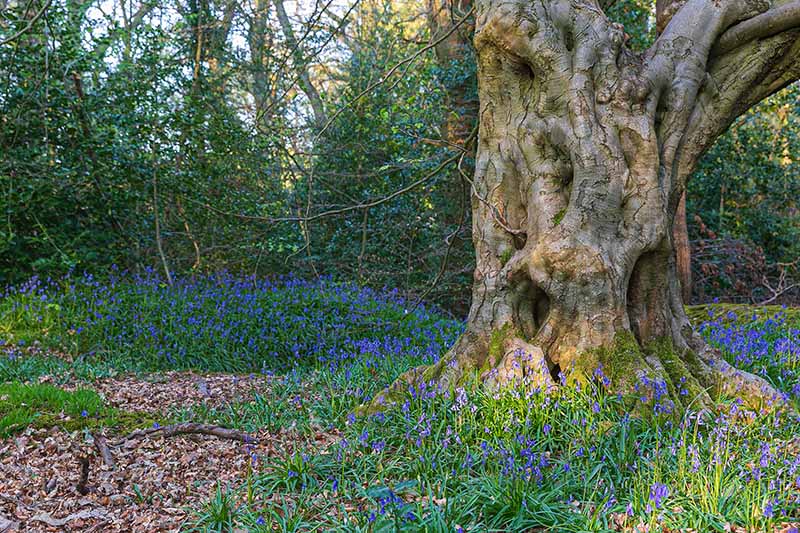
If you find an area thickly carpeted with these flowers, you may be standing in a 400-year-old woodland, or even an ancient wildwood. They are believed to have appeared in Britain after the last ice age, and are often used as an indicator species for ancient woodlands.
H. non-scripta is under threat due to the decline of these woodland habitats, and thanks to their exceeding popularity as well, which leads people to disturb areas where they are growing in the wild and to dig up the bulbs to take home.
Besides being protected by the Wildlife and Countryside Act, there is another good reason to leave wild bluebells alone:
According to folklore, bluebell woods are enchanted and inhabited by fairies. Trampling a bed will anger the fairies that were resting there, and if you pick a bloom, the fairies will lead you astray in the woods, and you'll get lost forever.
Every part of the plant is poisonous, thanks to the presence of cardiac glycosides, and they are toxic to humans and animals.
In the past, bluebells were used to ward against nightmares, as well as to treat leprosy and snakebites. The sticky sap was used as a glue for arrow making, and as a book binding agent that protected the bindings against insects.
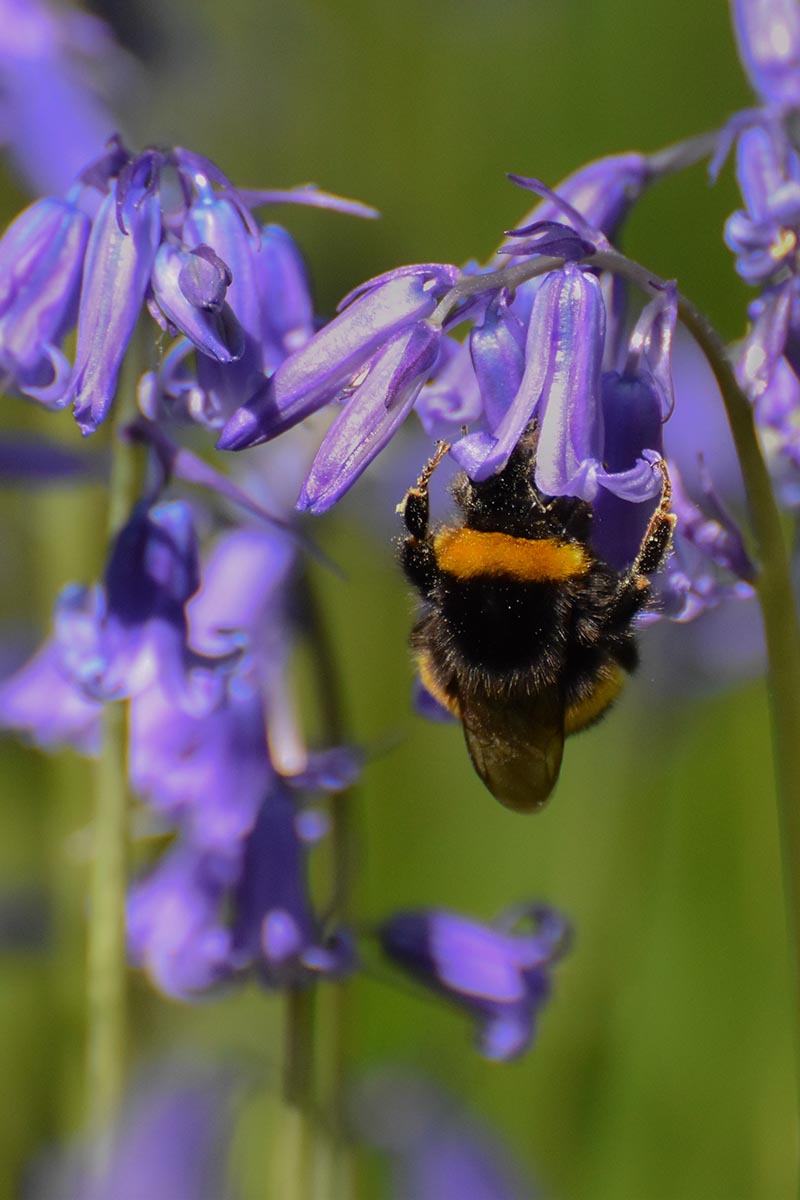
The beautiful blue, white or, more rarely, pastel pink flower bells attract a variety of pollinators, including bees and butterflies.
Instead of crawling deep into the bell flower, some bees will simply chew a hole in the side of a bloom to access the nectar!
Propagation
English bluebell can be propagated by seed or bulb offsets.
From Seed
Seeds ripen and scatter naturally in July and August. Letting the plants self seed is the easiest way to propagate them to create a natural carpet of blue.
If you wish to start a new carpet, you can choose to collect the seeds from your flowers. Alternatively, to guarantee you will get pure H. non-scripta blooms and not the hybrid, purchase open-pollinated seeds.
Sow the seeds as soon as you collect them in the summer. Broadcast over rich loam that's high in organic matter, or amended with well rotted leaf mold, compost, or manure.
Or, sprinkle on the surface of small three- or four-inch pots filled with a well draining potting soil, cover with a thin layer of compost or soil, and keep the medium moist. The seeds prefer a cool, shaded area outdoors or in a cold frame to germinate, so do not provide artificial heat.
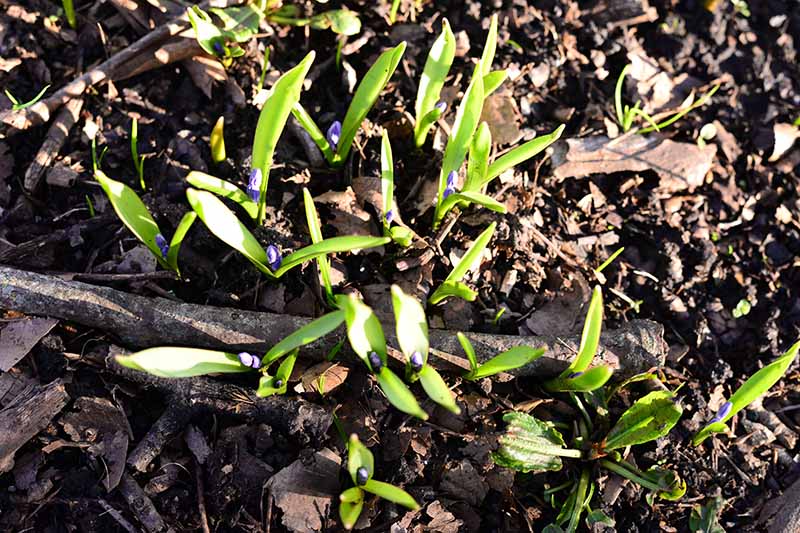
Germination can be erratic and may take months, sometimes from nine to as many as 24. Protect the pots during the winter by placing in a cold frame or against a tree.
Once germinated, grow individual seedlings in their pots until their roots are established and each plant is strong enough to be transplanted into the ground.
If you do decide to start indoors, sprinkle on the surface of your selected medium in seed-starting trays, cover with a clear bag or lid, and store in a 64 to 72°F area for four weeks. Keep moist. After four weeks, move into a fridge for six weeks to cold stratify, then remove and store in the warm area again.
Once germinated – which can take months – remove the cover and continue to keep moist. Transplant when large enough to handle into small pots and grow at 60°F.
In the spring, acclimatize the plants to the outdoors over two weeks, hardening them off for a bit longer each day until they can withstand the outdoor conditions, and transplant into their permanent position.
Plants grown from seed may take two to five years to flower.
From Bulb Offsets
Dividing bulb offsets means a much faster propagation to flowering time, and it is an effective way to guarantee true English bluebells.
You'll be able to tell there are healthy bulb offsets to divide from your mature plants when a clump forms above ground.
Remove bulb offsets in mid to late summer, as soon as the leaves have died. Carefully dig up the bulb and remove the offsets with your hands. Read more about how to propagate bulbs at home in our guide.
Replant immediately to avoid allowing the roots to dry out. Prepare the soil by loosening and amending with compost, well rotted leaf mold, or manure.
Make sure you plant the offsets root side down, three to four inches deep, and spaced four to six inches apart. For a more natural looking carpet effect, plant in small clumps at random. Water in well.
Bulbs and Transplants
Plant purchased bulbs and potted plants in the garden in the fall.
As with bulb offsets, prepare the soil by loosening and amending it with compost, and place bulbs as described above for offsets.
Transplant potted plants at the same depth as the container they came in, backfill with soil, and water in well.
How to Grow
H. non-scripta prefers dappled shade, but will grow in full sun as well. They can be found in open fields and on grassy cliffs in the wild, often indicating the area was once a woodland.
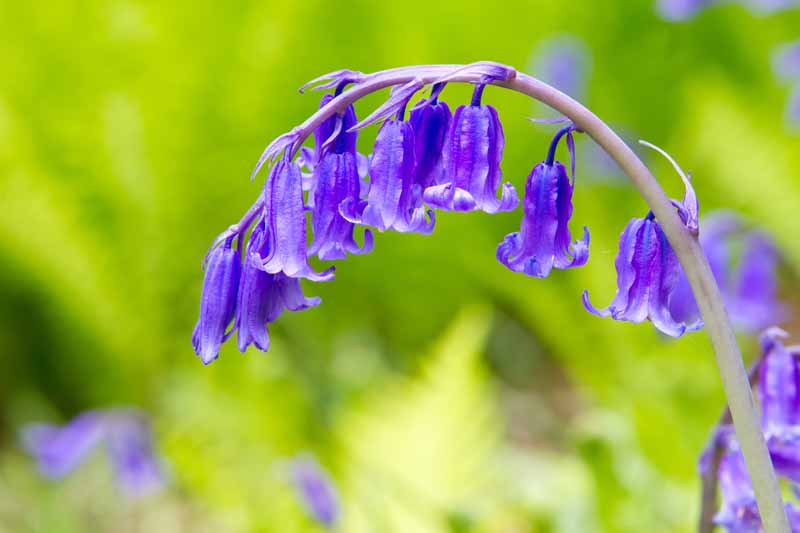
The foliage dies back after flowering, and they go dormant by early summer.
These plants prefer organically rich, well draining, moist soil. They will tolerate a wide variety of soil types including sand and loam, but clay soils should be amended with compost to improve drainage and keep the plants happy.
They tolerate a pH range of 5.5 to 7.5 but do best in slightly acidic soils.
Water when the soil is dry to a depth of two inches.
You may choose to feed as soon as the foliage pushes through the soil in the spring, using a low nitrogen fertilizer such as Rose and Bloom Granular Plant Food 4-6-4 (NPK), which is available at Burpee.
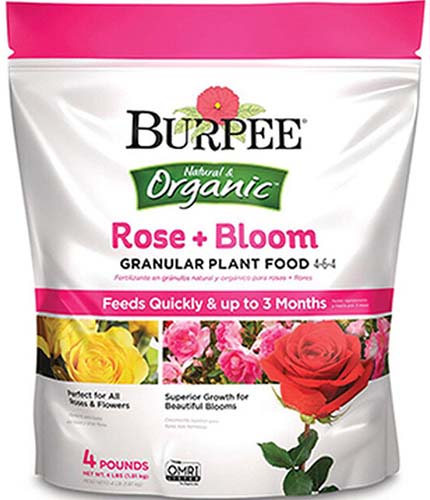
Rose and Bloom Granular Plant Fertilizer
However, they don't need fertilizer when grown in organically rich soils in a woodland setting.
Why not try growing them in containers? As long as the pots have drainage holes and the medium is high in organic matter, all you need to do is remember to check the soil moisture often.
Containers tend to dry out more quickly than garden soil, so you may need to water more frequently.
Growing Tips
- Plant in full sun or dappled shade.
- Keep the soil moist but not wet.
- Grow in soil rich in organic matter or amended with compost.
Pruning and Maintenance
Remove spent flowers to avoid self seeding of hybrids if Spanish bluebells are situated nearby.
The foliage will slowly wither after flowering, and though this can look a little unattractive, do not remove it. The plant is busy making and storing energy in the bulb for flowering the following spring!
Instead, you can plant with ferns or hostas to mask the dying foliage.
Managing Pests and Disease
H. non-scripta is resistant to rodents, rabbits, and deer. Although the blooms attract a variety of pollinators, there are no serious insect pests to worry about with these plants.
Slugs and snails can become an issue during wet springs. Read all about how to protect your garden from these common garden pests in our guide.
As for diseases, these plants may host Uromyces muscari, or bluebell rust.
If you notice small yellowed areas on the leaves, with dark colored specks forming a circle or oval in the middle, that's rust.
Though it can be a little unsightly once you notice it, it does not seriously affect the health of the plant.
Best Uses
A welcome pop of vibrant color in the spring, carpets of bluebells growing in the dappled sunlight of a woodland garden sound like a dream come true to me.
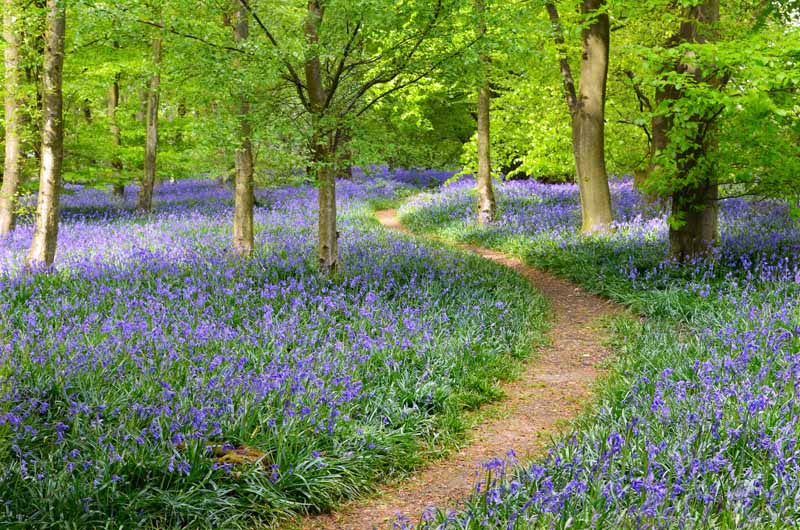
Plant your bluebells in woodland gardens or encircling deciduous trees, in the margins of shade gardens, in borders, and in rock gardens.
Mix them with other colorful spring blooming bulbs, such as tulips and daffodils, in containers or beds.
Quick Reference Growing Guide
| Plant Type: | Perennial flowering bulb | Flower / Foliage Color: | Blue (rarely pink or white)/green |
| Native to: | Western Europe | Maintenance: | Low |
| Hardiness (USDA Zone): | 5-8 | Tolerance: | Deer, rabbits |
| Bloom Time: | Spring | Soil Type: | Loam, sand |
| Exposure: | Full to dappled shade | Soil pH: | 5.5-7.5 |
| Spacing: | 4-6 inches | Soil Drainage: | Well-draining |
| Planting Depth: | 3-4 inches (bulbs), 2 millimeters (seeds) | Attracts: | Bees, butterflies, other pollinators |
| Height: | 12-18 inches | Uses: | Bulb beds, borders, containers, rock gardens, woodland plantings |
| Spread: | 3-6 inches | Family: | Asparagaceae |
| Water Needs: | Medium | Genus: | Hyacinthoides |
| Common Pests and Disease: | Slugs, snails; bluebell rust | Species: | Non-scripta |
Blue Woodland Fairies
Imagine a forest floor glittering with shades of blue in the early spring, with sunbeams shining down, filtered through fresh leaves.
A familiar Old World bloom, English bluebells are a classic garden addition. Low maintenance, self spreading, and fragrant, this is a spring bulb you don't want to miss.
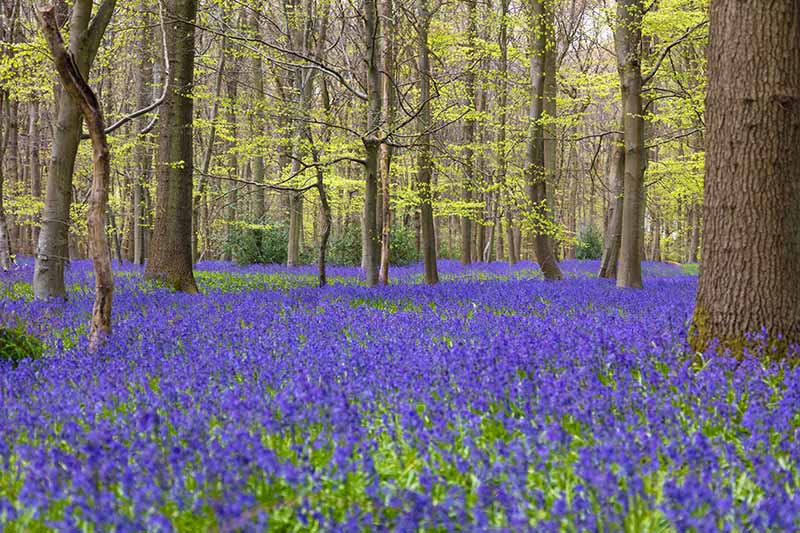
Do they grow wild where you live, or do you grow them in your garden? Tell me about it in the comments below. And while you're there, let me know if you believe in fairies!
And for more information about growing bluebells in your garden, check out these guides next:
- How to Grow and Care for Wood Hyacinth (Spanish Bluebell)
- How to Grow and Care for Virginia Bluebells
williamswrecertrecan.blogspot.com
Source: https://gardenerspath.com/plants/flowers/grow-english-bluebells/
0 Response to "Blue Bell Plant Information Growing Bluebells From Seed"
Post a Comment